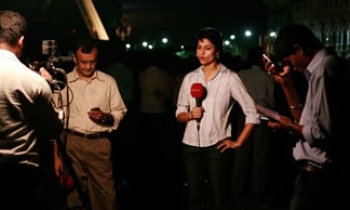The growth and immediacy of online media together with the availability of free papers has impacted heavily on the UK regional newspaper market according to new figures.
Half-yearly circulation figures from the Audit Bureau of Circulations show only English regional daily newspapers did not lose readers year-on-year.
The Oxford Mail gained 1.5 per cent to 25,373, while the Scunthorpe Telegraph also rose by 2.8 per cent over 12 months to 21,278.
Overall, though there was little for publishers to smile about.
The Manchester Evening News dropped a whopping 26.8 per cent year on year, and 18 per cent on the second half of 2007 to 94,018.
In the North West region, the Liverpool Echo is now the biggest circulating paper with 110,804 readers but it’s figures were still down. Year on year circulation is down by 7.8 per cent and 6.1 per cent for June to July 2007.
The Birmingham Mail fell by 4.7 per cent to 75,787, down by 13.1 per cent year on year.
The Leeds-based Yorkshire Evening Post slipped by 5.2 per cent over the six months to 58,114 and fell by 8.1 per cent year on year.
The ABC figures have come as the Newspaper Society announced it is pressing ahead with JICREG and ABC Electronic to achieve a system of audience measurement.
The aim is to which reflects the reach of UK regional press print with the growing digital platforms.
As well as 1,300 registers newspaper titles, the sector offers over 800 websites, as well as 600 niche magazines, 28 radio stations, and two television stations.
The first stage of the Newspaper Society-led project has been completed. A database has been built and is currently being tested.
The project is being steered by the NS Portfolio Audience Group, chaired by Mark Rix of the Manchester Evening News. Advertising agencies will be involved in testing and feedback at each stage of the project.
Associate director at MediaCom Accent and a director of JICREG, Les Middleton, said,. “With clients becoming more media ‘savvy’ it is essential we, the agencies, have sound arguments to back up our decisions for local media usage.
“This is exactly the sort of initiative the regional media marketplace needs.”
The aim of the project is to extend the JICREG regional press readership database to encompass regional press internet audiences and provide agencies and advertisers with a geographical system for analysing the combined net reach of a newspaper and its website within the newspaper’s circulation area down to postcode sector level.
Head of regional media at Carat, Conor MacLoughlin, said, “Clients are increasingly looking for multi-media solutions at a local level.
The regional press has done an excellent job in terms of meeting the demands of the new landscape, the last decade seeing an exponential growth in the number of options open to us for local targeting, from magazines and niche publications, through to websites.
He added, “Regional media owners need to ensure accountability in order to secure their share of budgets. The NS audience research project will be vital in providing this accountability.
“I particularly look forward to what it will tell us about the nature of the relationship between established local press readers and the online propositions of their local papers.”
The regional press is now firmly established as a multimedia communications business but with the familiar newspaper brand at its heart.
The industry sells and distributes over 67 million printed newspapers every week, with nearly 400,000 sold every hour.
Accoirding to the Newspaper Society, print remains the best means for advertisers to access local communities, with 84 per cent of all UK adults reading a regional or local newspaper every week.
The regional press is investing in new media platforms and innovative systems including digital services and TV.
The past months have also seen a number of free ‘Lite’ titles launched across the UK.
The Daily Record, Liverpool Daily Post, Oxford Courier, Sheffield Star and Yorkshire Evening Post have all announced free titles in their respective areas, following Manchester Evening News’ launch of its free city edition last year.
Communications director at the Newspaper Society, Lynne Anderson, said: “The regional press is harnessing a powerful combination of print and internet to layer its local markets, extend audience reach and deliver ever greater advertiser response.
“ Working with agency and media research experts, the industry has firmly grasped the major challenge facing all media today and is actively developing a robust and reliable system of multimedia audience measurement.”
The regional press is a £3 billion advertising medium - the largest print medium in the UK and second only to TV.
Newspaper Society research, ‘The Wanted Ads’, has shown that people consider the regional press to be the most relevant media to their own lives, and 71 per cent of people act on the advertising.









